Introductory Guide to Cat Coat Genetics
Introductory Guide to Cat Coat Genetics
2022-06-20
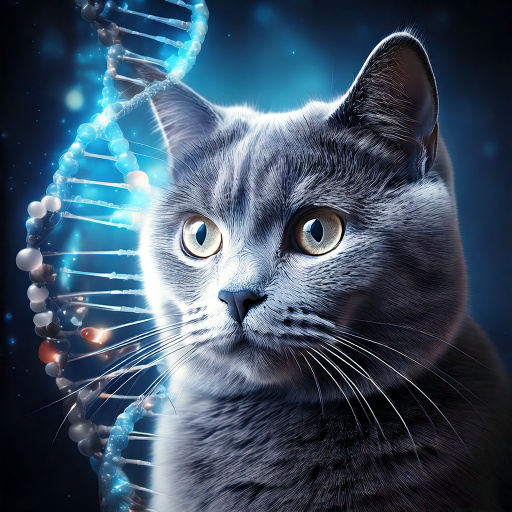
Introductory Guide to Cat Coat Genetics
Introduction
The incredible variety of coat colors and patterns in cats has fascinated breeders and cat lovers for centuries.
But did you know that these visual traits are the direct result of genetics?
In this article, we explain how pigments, alleles, and sex-linked genes determine feline coat colors — with a special focus on the British Shorthair breed.
A perfect read for anyone who wants to understand the genetic foundations behind the beauty of cats.
Pigments: Eumelanin and Pheomelanin
A cat’s coat color is determined by two primary pigments:
- Eumelanin: responsible for black, brown, and blue shades.
- Pheomelanin: associated with orange, cream, and caramel tones.
The amount and distribution of these pigments define the final coat color.
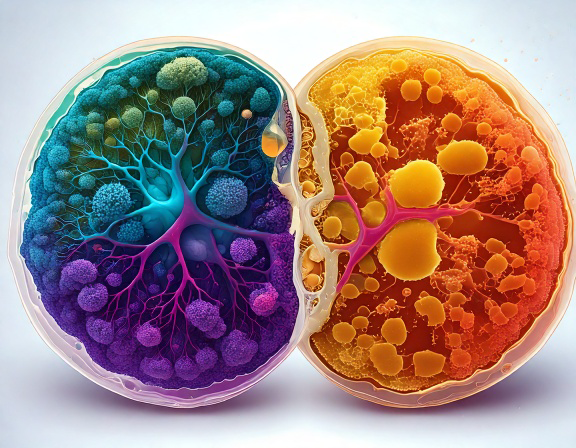
Comparison of the two main pigments: eumelanin (dark) and pheomelanin (light).
Alleles: O and o
The expression of these pigments is controlled by alleles, which are different versions of the same gene:
- O allele (orange): dominant — stimulates pheomelanin production.
- o allele (black): recessive — allows eumelanin production.
The combination of alleles inherited from the parents determines the cat’s final coat color.
Differences Between Males and Females
Since the orange color gene is located on the X chromosome, it affects males and females differently:
Males (XY):
XᴼY→ orange coat.XᵒY→ black (or blue, if diluted) coat.
Females (XX):
XᴼXᴼ→ orange.XᵒXᵒ→ black.XᴼXᵒ→ tortoiseshell/tricolor, showing a mosaic of colors due to random X-chromosome inactivation.
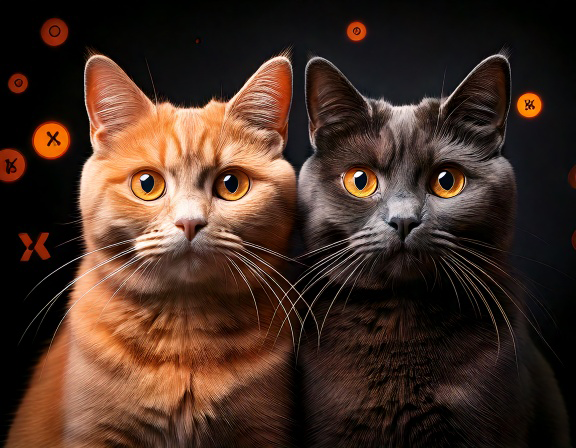
Genetic inheritance: X and Y chromosomes influencing coat color.
Agouti Pattern: Natural Tabby
The agouti pattern is the oldest and most natural in cats.
Each individual hair alternates bands of light and dark pigments, creating a "striped" or "ticked" appearance.
- A allele (agouti): dominant — results in tabby or banded coats.
- a allele (non-agouti): recessive — produces solid-colored coats.
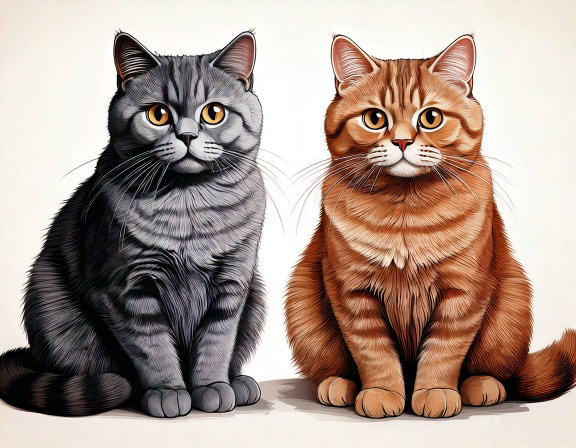
Side-by-side comparison of British Shorthairs: left with agouti (tabby) pattern, right with solid coat.
Final Considerations
Feline genetics is a fascinating field that reveals the secrets behind the unique appearance of our beloved cats.
The British Shorthair breed, with its impressive diversity of colors and patterns, perfectly showcases the richness of feline genetics.
This article is just an introduction.
In future posts, we’ll dive deeper into topics such as color dilution, bicolor markings, and pointed patterns, and how these factors contribute to each cat’s unique beauty.
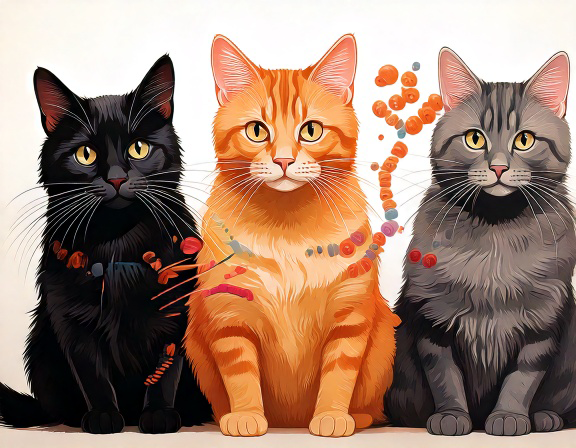
Visual overview of coat color genetics in domestic cats.
See Also
FAQ – Cat Coat Genetics
What determines a cat's coat color?
Coat color is determined by genes regulating the production of eumelanin (black, brown) and pheomelanin (orange, cream), along with specific alleles.
Why can females be tricolored but males usually cannot?
Because the orange color gene is on the X chromosome. Females have two X chromosomes and can inherit both alleles, displaying two colors. Males, with only one X chromosome, can display only one color.
Can a cat's coat color change over time?
Slightly, yes. Factors like sunlight exposure, age, nutrition, and seasons can affect the shade, but the underlying genetics remain unchanged.
What is the agouti pattern?
The agouti pattern is the natural tabby banding where each individual hair alternates light and dark pigment sections.
This content was created by British Village
Based on our extensive experience as responsible breeders of British Shorthair cats, combining technical knowledge with a deep passion for the breed.